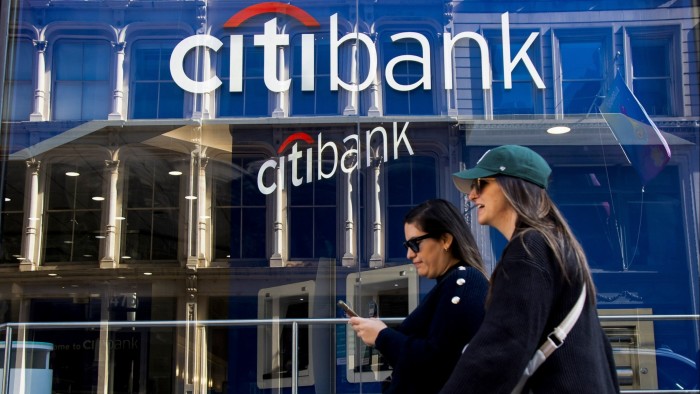Stay informed with free updates
Simply sign up to the US banks myFT Digest — delivered directly to your inbox.
Wall Street’s biggest banks reaped almost $37bn in trading revenues in the first quarter of the year — their best performance in more than a decade — as Donald Trump’s administration unleashed a barrage of market-moving announcements.
The combined performance by JPMorgan Chase, Goldman Sachs, Morgan Stanley, Bank of America and Citigroup marks a return to favour for a business that until 2020 had been a shadow of its pre-financial crisis form.
Trump’s second term as US president has ushered in a period of economic and policy uncertainty, particularly around tariffs, that has led to wild stock market gyrations and created opportunities for traders to exploit market moves.
Stock trading was the standout performer for banks in the first quarter, with revenues across the five firms rising about $16bn, up 34 per cent from a year earlier. All the banks reported record revenues from equities trading.
Total revenues from fixed income trading was up 6 per cent at about $21bn, the highest since the height of the Covid-19 pandemic in the second quarter of 2020.
On Tuesday, Citigroup reported a 20 per cent surge in first-quarter profits to $4.1bn, boosted by the performance of its trading business. Bank of America reported net profits of $7.4bn, up 11 per cent.
However the two banks reported smaller increases from trading than JPMorgan, Goldman Sachs and Morgan Stanley, which have bigger trading businesses.
Goldman Sachs retained the equities trading crown, with $4.2bn in revenues from the business. But Morgan Stanley’s gains of 45 per cent outpaced Goldman Sachs’, taking it within $70mn of its rival. BofA and Citi both posted increases of less than 20 per cent, the lowest of the group. JPMorgan led in overall trading revenues with $9.7bn, up about a fifth from the year before.
Banks’ trading businesses have had to evolve since the 2008 financial crisis. They now focus much less on so-called proprietary trading, where they take bets with their own capital, and more on facilitating and financing trades for clients.
Traders at the big US banks have benefited from bouts of volatility starting with the outbreak of the Covid-19 pandemic. Rapid interest rate rises in 2022 and frantic trading around geopolitical events such as Russia’s full-scale invasion of Ukraine have also lifted revenues.
The recent market volatility has been a double-edged sword for Wall Street. It has restrained investment banking activity, dashing hopes that “animal spirits” would be unleashed and pent-up demand for mergers and acquisitions would finally come to fruition.
Total investment banking fees at JPMorgan, Goldman Sachs, Morgan Stanley, BofA and Citi rose 2 per cent in the first quarter from a year ago to about $8bn, but the timing of fee payments means many of those relate to deals announced months earlier.
On earnings calls, bank executives have cautioned that elevated uncertainty around Trump’s trade tariffs risk keeping buyers and sellers of companies on the sidelines.
https://www.ft.com/content/d535bf1a-0bb3-4cfd-9f45-22ec805ae13b


